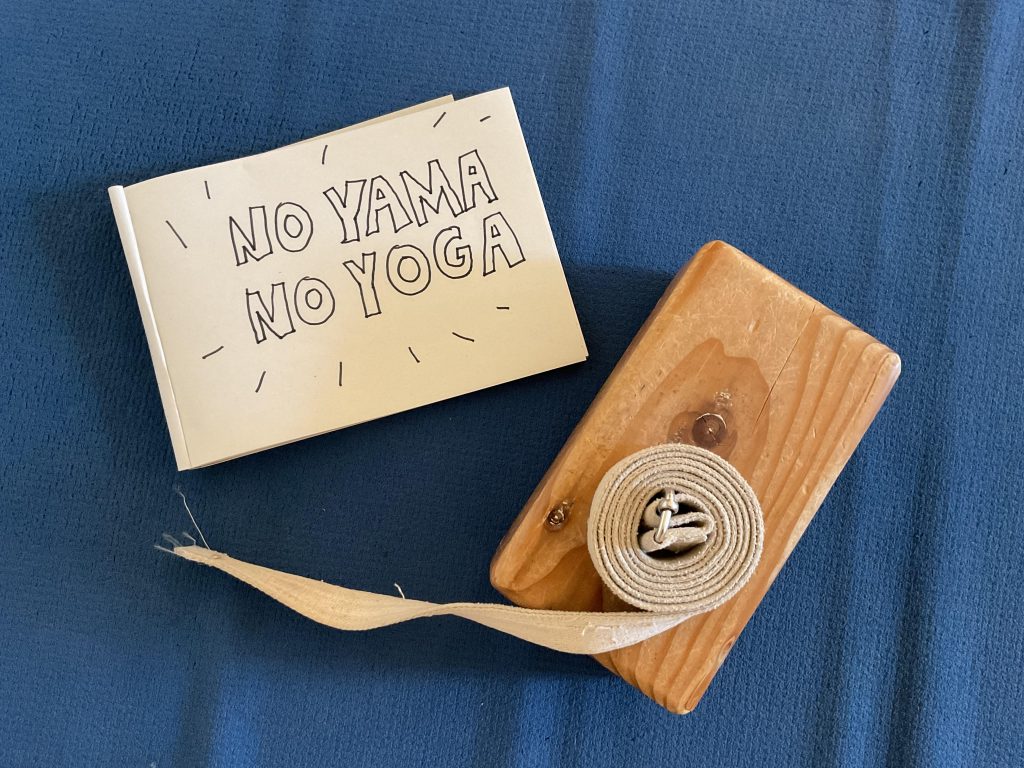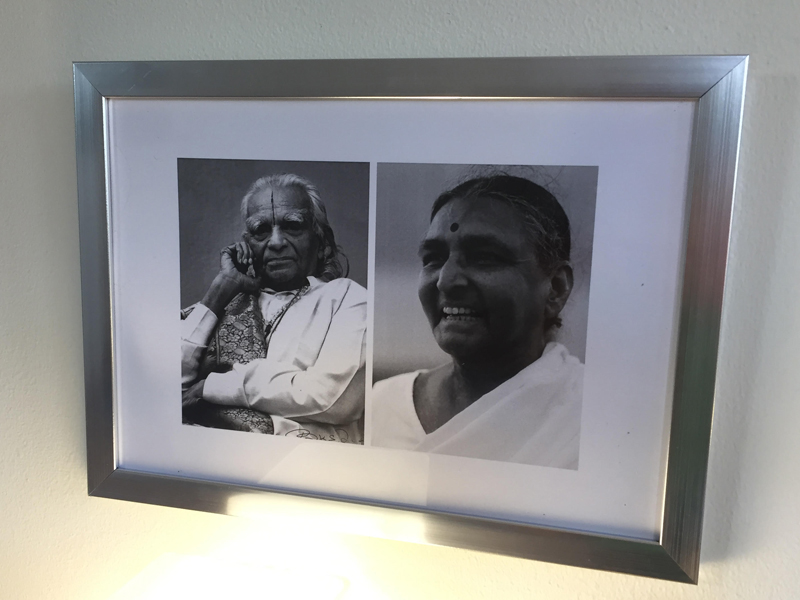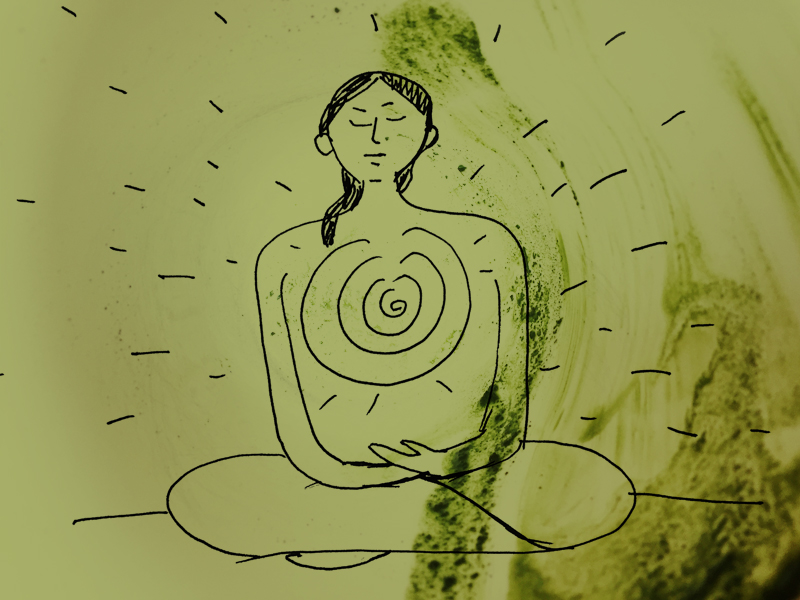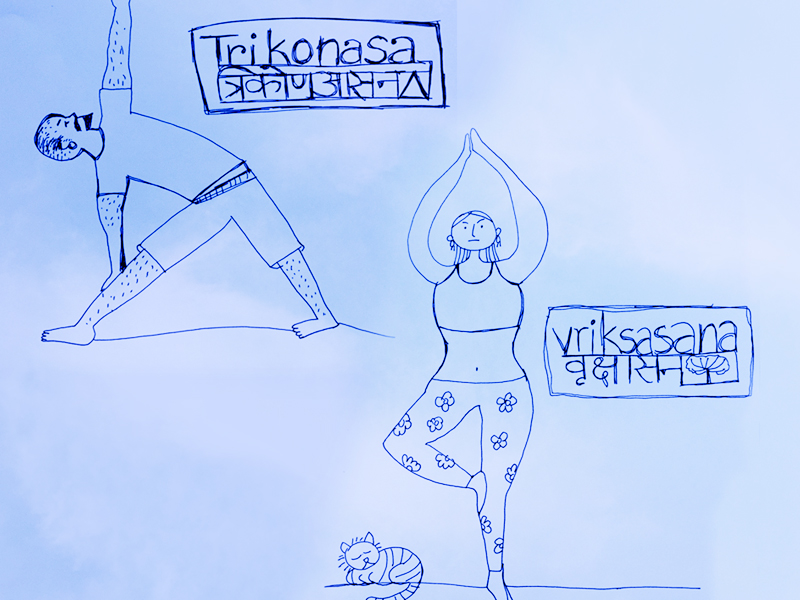The word Yama in Sanskrit “reining in” or “control” and the word Yoga means “union, yoking” (with the Supreme Spirit),”to join.
Yoga sutra 2.29 states, Yama niyamasana pranayama pratyahara dharana dhyana samadhi astau angani: The eight limbs of yoga are: yama (self-regulation), niyama (observances), asana (posture), pranayama (breath control), pratyahara (withdrawal of senses), dharana (concentration), dhyana (meditation), and samadhi (bliss).
The first limb is taking the step to connect to something bigger, the supreme spirit, universal wisdom.
It is very important to accept that the path of Yoga begins with self regulation at a social level. A person who blindly follows impulsive behaviour is at the mercy of their desires and aversions regarding the world.
If every time we get angry and pissed off with a situation and you act out with the impulse of anger, then there is no room for seeing things another way. Basically we have become robotic and predictable in our responses to life. We feel angry we do actions based on that impulse, we feel lust we act based on lust, we feel shameful or fearful about something we did we lie to protect ourselves, we want something and we cling to it or worse use all kinds of methods to get it…maybe down to even stealing. Having a mental state which has poor impulse control is not conducive to learning or success.
What are the 5 Yamas?
‘Sanskrit text, Unicode transliteration and English translation of sūtra 2.30:
अहिंसासत्यास्तेयब्रह्मचर्यापरिग्रहा यमाः ॥ २.३० ॥
जातिदेशकालसमयानवच्छिन्नाः सार्वभौमा महाव्रतम् ॥ २.३१ ॥
ahiṃsāsatyāsteyabrahmacaryāparigrahā yamāḥ || 2.30 ||
jātideśakālasamayānavacchinnāḥ sārvabhaumā mahāvratam || 2.31 ||
(30) Ahimsā (non-injury), satya (truth), asteya (abstention from stealing), brahmacarya (continence) and aparigraha (abstinence from avariciousness) are the five yamas (forms of restraint). (31) However, (they become a) great vow when they become universal, being unrestricted by any consideration of class, place, time or concept of duty.”
ref: https://www.wisdomlib.org/hinduism/book/yoga-sutras-study/d/doc628740.html
These are restraints we take up that are universal, not cultural or historical. These are relevant to everyone.When we embark on the practise of Yoga we make a vow to uphold these Yamas (restraints). As a practitioner of Yoga Asanas it is important to uphold these. If through our asana practice we aspire to connect (yoke) ourselves to Universal wisdom and peace then following the Yamas is a prerequisite.
Ahimsā (non-injury) or harming others through our actions and speech. We don’t kill, hurt or cause physical injury to another being. People feel safe around us, knowing whatever the provocation we will not harm another or cause injury.
Satya (truth) speaking the truth is vital. Ultimately truth prevails. To actively engage in false speech is to encourage a behavior which takes us away from reality. How are we to realise the truth of existence if we are ok with false speech. On occasions where speaking is likely to harm others, then silence is advisable. People trust us and know that our word is reliable.
Asteya (abstention from stealing) is not taking something that belongs to another. This is respecting another’s right to safely own belongings. If we do not steal then we will not take something that does not belong to us. Once again we are sending a message that by taking up this vow we will not encroach and violate another’s property or belongings to gratify our desires for the same object.
Brahmacarya (continence) Lifestyle characterized by sexual continence or complete abstinence. If we are in an intimate relationship we remain within the confines of that contract and not indulge in sexual misconduct. Over time to go deeper into practise we might consider giving up sexual and sensual pleasures altogether to find a more refined pleasure. Once again by taking up this vow we are safe to be around and partners who are committed to us know that we will not let them down.
Aparigraha (abstinence from avariciousness) Often our desire for material objects can be quite innocent to begin with. And if we are not harming or stealing but just buying, eating and enjoying the good things of life a bit more what is the problem? The focus of excessive material gain can derail us off finding meaning and joy in what is real. If we constrain our wants and desires, then we have to learn to look elsewhere to satisfy the craving. The practise of yoga promises that…however if we spend too much time following worldly pleasures we have no time to investigate the possibility of connecting to something bigger, we are already tied or yoked to our greed and craving.
Practising the Yamas will deepen your Yoga
Therefore it is vital to not disregard this step as some sort of esoteric wisdom that is not relevant to us anymore. Just being able to contort oneself into complex physical postures is not Yoga Asanas…more is involved. Start out with Yamas, become mindful of your behaviour in relationship to society and the world around you.
When you get into your car you need to put on a seat belt (which is a restrain) for your safety…similarly you need Yamas for the journey to Yoga!





